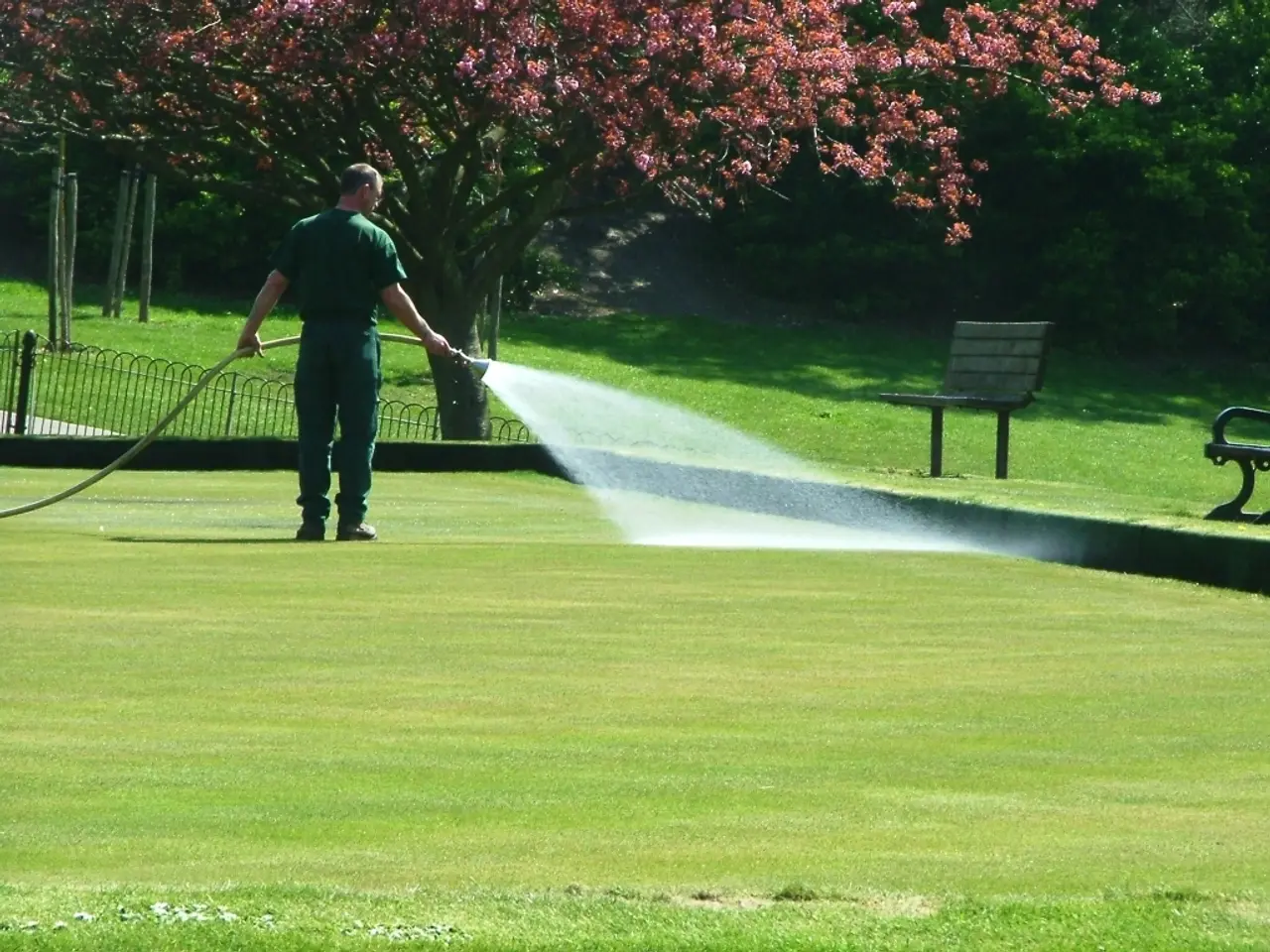Tips for Irrigating Plants During Water Restrictions via Hosepipe
In response to water shortages caused by climate change, some areas may implement hosepipe bans to conserve water. However, this doesn't mean that you have to let your plants suffer. Here are some alternative watering methods that comply with hosepipe ban regulations and help maintain healthy plants:
- Watering Cans and Buckets: Watering cans are a great option for precision watering without using a hose. They allow you to conserve water and target specific areas of your garden. Filling them from the mains or collected water is perfectly acceptable during a hosepipe ban.
- Water Butts: These are a sustainable way to store rainwater collected from gutters. They can provide a reservoir for garden use and are available in various designs and sizes. You can fix them to downpipes from houses, garages, sheds, or greenhouses. Linking two or more water butts together can collect even more water, making them an efficient solution.
- Greywater Recycling: Greywater from baths or washing (free from harmful chemicals) can be reused for plants. This is a great way to recycle household water and conserve precious resources. Use it immediately rather than storing it for later use, as it can quickly spoil.
- Drip Irrigation Systems: These systems provide slow, direct water delivery to the roots of plants, minimizing water loss. They can be connected to water butts for added efficiency. If fitted with a pressure-reducing valve and a timer, they are permitted for use during a hosepipe ban.
- Mulching: Applying organic materials like bark chips or compost around plants helps retain soil moisture and reduce the need for frequent watering.
- Watering Times: Changing watering times to cooler parts of the day, such as early in the morning or late evening, can help minimize evaporation. Targeting the base of plants ensures better absorption.
To check if a hosepipe ban is in force in your area, contact your local water company. Customers on the Priority Services Register are exempt from hosepipe bans. Many different watering or irrigation systems using drip or 'trickle' irrigation are available for gardens. Companies like Marshalls, Suttons, and Crocus sell a variety of products to help you implement these solutions, including water butts, digital watering timers, drip irrigation kits, and automatic watering kits.
The average roof collects approximately 85,000 liters of rainwater per year. To prevent problems when the butt is full, consider using a rain diverter that shuts off the inflow. Elderly, disabled, recovering from injury, or vulnerable customers are often included in the Priority Services Register. Applying for this register is recommended, even if a ban is not yet in force in your area.
- To minimize water usage while maintaining a healthy garden, one can utilize environmental-science practices such as watering cans and buckets, or invest in a watering system like drip irrigation that is compliant with hosepipe ban regulations.
- In the realm of home-and-garden improvements, greywater recycling from household sources can help conserve resources during a hosepipe ban, while employing techniques like mulching and changing watering times can also reduce water usage.
- For those looking to revamp their garden lifestyle, it's wise to consider implementing alternative watering methods, like water butts or best-practice gardening techniques they can find within environmental-science literature.




